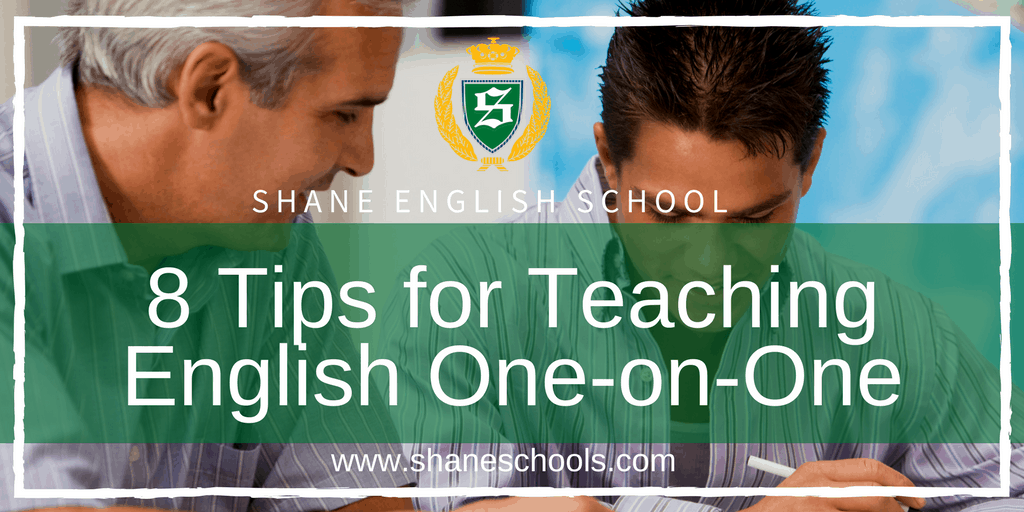While it may seem simpler than teaching large classes, teaching English one-on-one has its own challenges. There aren’t nearly as many students to contribute to the class, which means that the bulk of speaking, reading, and writing falls on just one student. It can also mean that the teacher needs to have much more prepared because activities wrap up that much sooner. Lucky for you, we have this handy list of 8 teaching tips to get the most out of one-on-one lessons.
Tip # 1: Use lots of realia
The use of real-life objects (otherwise known as realia) works exceptionally well in one on one lessons because you have closer contact with the student. For example, if you work with real city maps, you can sit next to your student while he or she gives you directions to a specific location and both of you follow the route on the map. Realia also makes the class more fun in general, and if you have a student who is a bit shy or reluctant to speak, real objects come in handy to break the ice or motivate the student. Needless to say, realia is absolutely essential in a one on one lesson with a child. If you have an adult student who wants to polish his or her business English, ask your student to bring brochures or print pages from the company’s website.
Tip # 2: Use your student’s background
Ask your student to tell you about their country? Say you know nothing about the country and ask him or her to tell you about it: what it’s like to live there; who the most popular celebrities are; customs and traditions. If your student works in a particular industry, say advertising, ask them to tell you about it: what the job involves; what the company does; who their clients are. In any case, your student will feel proud to share this information about something they do know.
Tip # 3: Use Internet resources
Using the Internet effectively in a large class can be a bit of a challenge; students may have to share computers and they usually wander to other sites, check their email, etc… But the Internet is absolutely perfect for teaching one on one. You can do reading activities with real websites, play an online game, listen to a podcast, watch a video, or even have your students take a test online. The possibilities are endless. But remember that proper lesson planning is still essential. Make sure you check all links and websites before your lesson.
Tip # 4: Allow some quiet time
It all depends on your student’s level, of course, and although some advanced students are willing to talk for hours, most find it hard to speak for a full 10 minutes. Make sure you follow a very active speaking activity or game with a more relaxed and quiet exercise: a young learner may draw a picture of the story they heard; a business English student may write an email; any student may complete a writing assignment or written exercise for a few minutes. Don’t be afraid of silence. Remember your students need some quiet time to gather their thoughts and relax.
Tip # 5: Plan multimedia lessons
Remember that the greatest benefit for students taking lessons one on one is that they have more time to speak. A great way to spark discussion is with video and audio. Show your student a video, check for listening comprehension, then discuss what you saw. The same can be done with any audio file. Keep in mind that there is a large variety of audio and video files available on the Internet, most of which are very easy to download.
Tip # 6: Ask your student to give presentations
A student who has to give presentations at work in English will be very thankful for having the chance to practice with you first. But children can also have a show and tell session: ask your young learner to bring his or her favourite toy, book, or stuffed animal, and tell you all about it (who they got it from or where, why it’s their favourite, etc…)
Tip # 7: Speak less in role plays
Naturally, the teacher is at an advantage because you manage the most words and expressions. But what if you “play dumb”? Pretend you are lost, don’t understand, ask lots of questions, and you’ll have your students not only speaking more in the role play but also laughing a lot! This works great when you reverse roles: you are the student, and your student is the teacher, and he or she has to explain something to you.
Tip # 8: How to handle games
Playing EFL games one on one can be little tricky and sometimes no fun for the student (he’s playing against the teacher!) So here’s what you can do:
- Give your student a head start of 30 seconds
- Give your student bonus points when you start the game
- Give your student 3 or 5 points for every one of yours
- Lose deliberately by making mistakes, being slow, pretending you got distracted, etc.
Many one-on-one lessons are with adult learners. Check out some of the differences between teaching children and adults.
A version of this article originally appeared in Shane English School’s Teaching English to Young Learners (TEYL) program, which is part of new teachers’ orientation.

We're hiring!
With schools around the world, Shane English School always has exciting new opportunities to offer.


